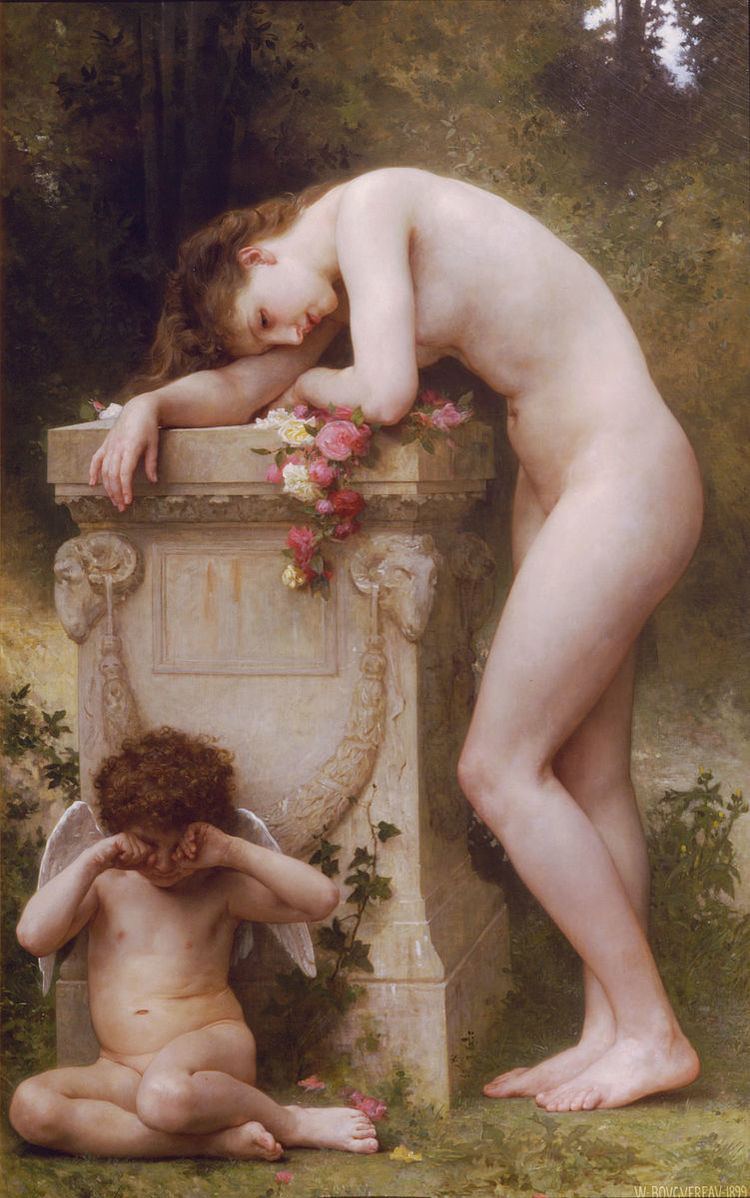Catalogue WAB 53 | ||
 | ||
Composed 1st setting: 1854 (1854): St. Florian2nd setting: 1861 (1861): Linz Dedication Funeral of Prior Michael Arneth | ||
Vor Arneths Grab (Facing Arneth's tomb), WAB 53, is an elegy composed by Anton Bruckner in 1854, for men's voices and trombones. Brucker wrote in 1861 a second version, Am Grabe (At the grave), WAB 2, for men's voices a cappella.
Contents
History
Bruckner composed the elegy for the funeral of Michael Arneth, the prior of the St. Florian Abbey. The work, which was written together with the Libera me, WAB 22, was performed on 28 March 1854 at the cemetery of the abbey.
The elegy was performed a second time for the funeral of Magistrate Wilhelm Schiedermayr on 23 September 1855.
The original manuscript of Vor Arneths Grab is stored in the archive of Wels. The work, which was first published in band II/2, pp. 184-188 of the Göllerich/Auer biography, is put in Band XXIII/2, No. 9 of the Gesamtausgabe.
Am Grabe
A revised, 21-bar long, a cappella setting (Am Grabe, WAB 2) was performed on the funeral of Josephine Hafferl on 11 February 1861.
This new setting discarded the fourth strophe. The voice score of the first two strophes is identical to that of Vor Arneths Grab. The setting of the third strophe is 5-bar longer.
The original manuscript is stored in the archive of the Liedertafel Frohsinn. The song, which was edited first by Wöß, Universal Edition, in 1924, is put in Band XXIII/2, No. 13 of the Gesamtausgabe.
Text and music
The elegy uses a text by Ernst von Marinelli.
The 28-bar-long work in F minor is scored for TTTB choir and 3 trombones. The setting of the first two strophes (bars 1 to 8) is identical. It is followed (bars 9 to 16) by the setting of the third strophe, and, after two instrumental bars, ends (bars 19 to 28) with the setting of the last strophe.
Although it is a funeral song, it displays little of the mournful character one might expect. The text and the music, with largely diatonic harmony and a predominance of major sonorities, focus instead on confidence about resurrection and salvation. Like the concomitant Libera me, the work contains portents of Bruckner's mature style and has thus a significant place in Bruckner's musical development.
Vor Arneths Grab
There are two recordings of Vor Arneths Grab:
Am Grabe
There is no commercial recording of the full setting of Am Grabe.
